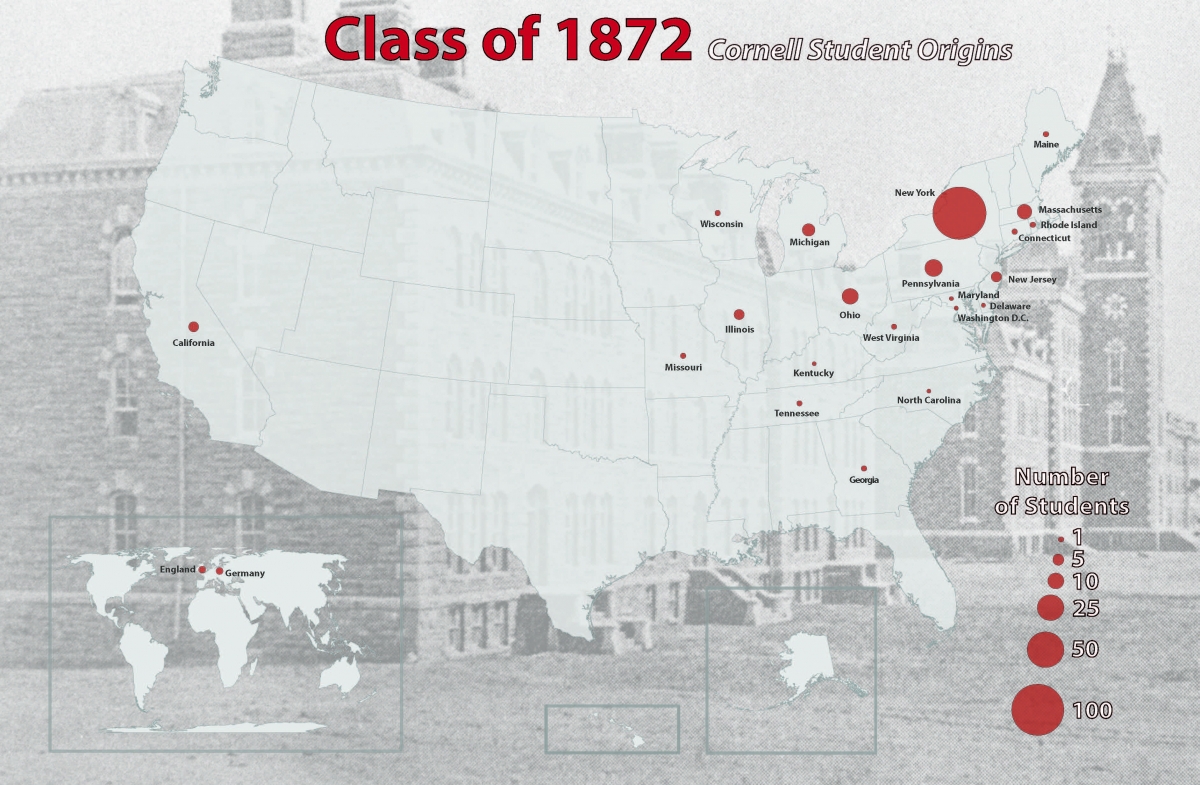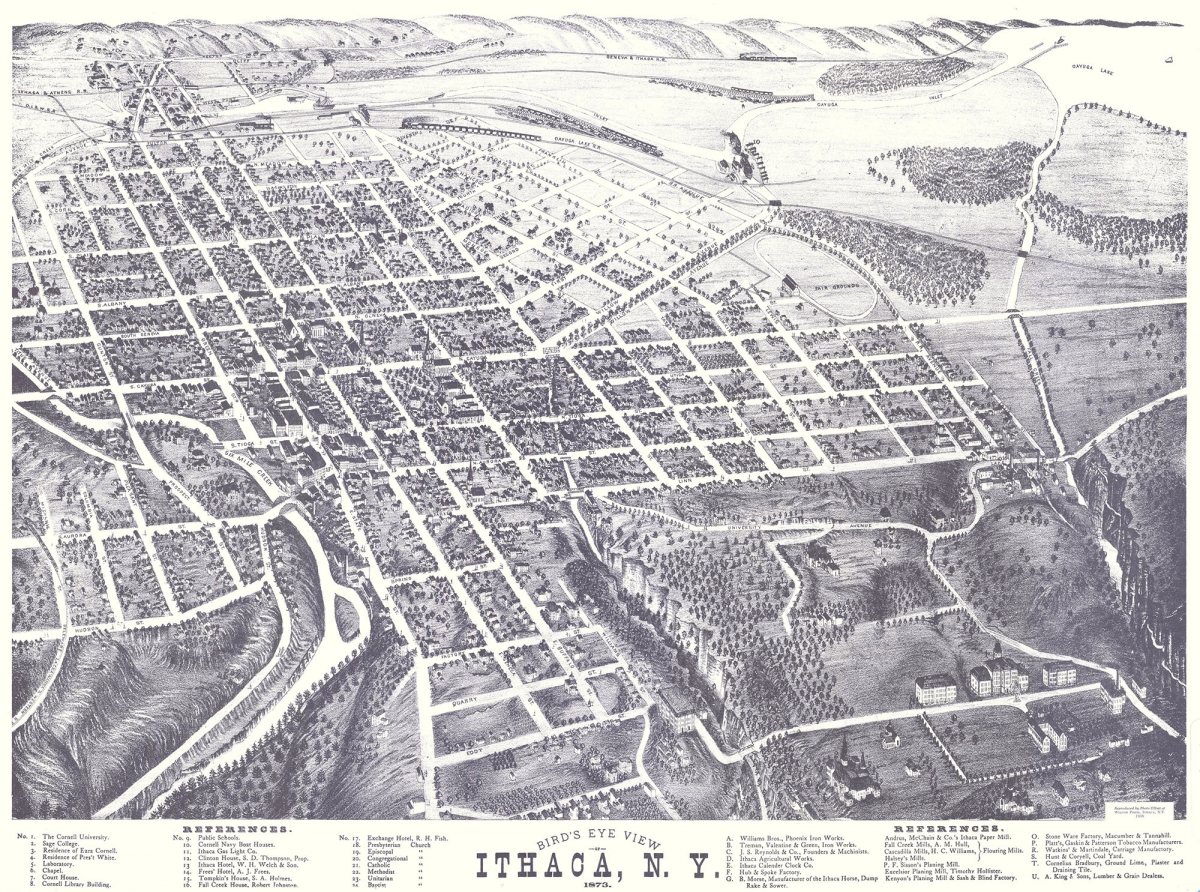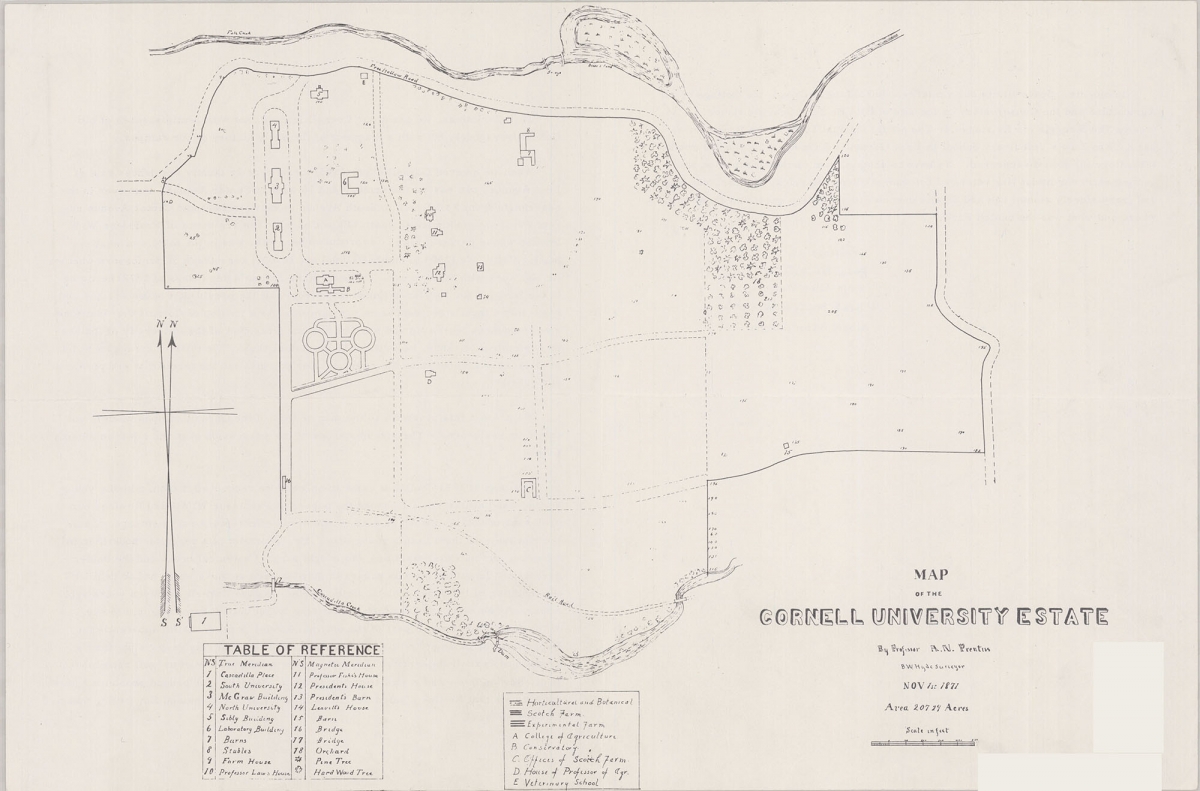
The first Cornell students came from all parts of the United States and New York, California, Florida, Nova Scotia, England, Russia, Brazil. The reasons they stated for choosing Cornell were various. In his “History of Cornell” Prof. M. Bishop points out that some came because the university was open to all races and colors. Others heard of Cornell in prayer meetings, when a clergyman declaimed against the “godless institution”, and thus their curiosity was aroused.

The Class of 1872 was the first full class and featured 188 students coming from 21 states, the United Kingdom, and Germany. According to the official history of the class, hundreds of young men came who had not thought of a college education, because they “could see no way to obtain what they longed for in any of the older colleges.” After graduation they became for the most part leaders in their communities - engineers, doctors, lawyers – and justified Ezra Cornell’s foresight.

The newly founded university expanded Ithaca’s population and brought economic growth. Cornell also fostered diversity of society, opinions and needs. The city government had to find a way to cope with the big changes, but that was quite difficult. In her book, “Ithaca: A Brief History,” Carol Kammen tells an almost anecdotal story, where a professor, who came to take a job at Cornell, stepped off the train, looked about and boarded the next train out of town. The city responded by improving the infrastructure and safety – in 1868, Quarry and Fifth Street were opened, Dryden Road, University Avenue and Hudson Street were widened, and gas lamps were installed on the streets; in 1870, the city spent more than $10,000 on street improvements. In the bottom right corner of this pictorial, one can observe the first three buildings on the Cornell campus with faculty housing scattered around.

This campus map was donated by Anna and Albert Wright. It shows the four faculty residencies on campus in 1872. The donors note the railroad, the College of Agriculture, and the Conservatory on the site of Olin Hall and Seavitts House (popularly known as the Struggle for Existence or The Strug) straight south of the President’s barn. They wonder where and what exactly was the Scotch Farm, and whether Law’s Veterinary School was in Ezra Cornell’s farm house. They also point out that the old wooden laboratory (marked with No. 6 in the legend) soon disappeared.